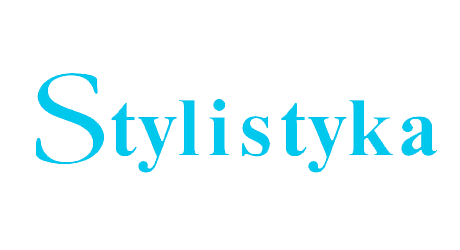Quellen
Google Scholar
https://www.bild.de/news/inland/news-inland/corona-news-im-live-ticker-alle-nachrichten-zu-covid-19-74564162.bild.html (08.07.2021).
Google Scholar
https://www.mdr.de/nachrichten/sachsen/corona-virus-sachsen-ticker-mittwoch-siebterjuli-100.html (08.07.2021).
Google Scholar
https://www.ndr.de/nachrichten/info/Corona-News-Ticker-Homeoffice-soll-weitermoeglich-sein,coronaliveticker1096.html (08.07.2021).
Google Scholar
https://www.n-tv.de/panorama/09-21-Eine-deutsche-Stadt-liegt-noch-ueber-der-Obergrenze--article21626512.html (08.07.2021).
Google Scholar
https://www.rtl.de/cms/coronavirus-liveticker-rki-meldet-1-330-neue-faelle-inzidenzfaellt-auf-11-3-4496453.html (08.07.2021).
Google Scholar
https://www.swr.de/swraktuell/baden-wuerttemberg/coronavirus-liveblog-in-bw-100.html (08.07.2021).
Google Scholar
https://www1.wdr.de/nachrichten/themen/coronavirus/ticker-corona-virus-nrw-1130.html (08.07.2021).
Google Scholar
Literatur
Google Scholar
Baudrillard J, 1978, Agonie des Realen, Berlin: Merve Verlag.
Google Scholar
Baudrillard J., 1994 [1981], Simulacra and Simulation, Ann Arbor: The University of Michigan Press.
Google Scholar
Baudrillard J., 2000 [1999], Der unmögliche Tausch, Berlin: Merve Verlag.
Google Scholar
Bucher H.-J., Gloning T., Lehnen K., 2010, Medienformate: Ausdifferenzierung und Konvergenz – Zum Zusammenhang von Medienwandel und Formatwandel. – Neue Medien – neue Formate. Ausdifferenzierung und Konvergenz in der Medienkommunikation, Hrsg. H.-J. Bucher, T. Gloning, K. Lehnen, Frankfurt, New York: Campus Verlag, S. 9-38, https://doi.org/10.12907/978-3-593-40981-8.
Google Scholar
Cieszkowski M., 2014, O zasadzie równoczesności w multiprzekazie. – Sytuacja komunikacyjna i jej parametry. „Być nadawcą – być odbiorcą”, Hrsg. G. Sawicka, W. Czechowski, Toruń: Wydawnictwo Adam Marszałek, S. 40-53.
Google Scholar
Florschütz G., 2005, Sport im Film und Fernsehen. Zwischen Infotainment und Spektakel, Wiesbaden: Deutscher Universitäts-Verlag, https://doi.org/10.1007/978-3-322-82201-7.
Google Scholar
Haarkötter H., 2019, Journalismus.online. Das Handbuch zum Online-Journalismus, Köln: Herbert von Halem Verlag.
Google Scholar
Hauser S., 2010, Der Live-Ticker in der Online-Berichterstattung: zur Entstehung einer neuen Mediengattung. – Neue Medien – neue Formate: Ausdifferenzierung und Konvergenz in der Medienkommunikation, Hrsg. H.-J. Bucher, T. Gloning, K. Lehnen, Frankfurt am Main: Campus Verlag, S. 207-225, https://doi.org/10.12907/978-3-593-40981-8.
Google Scholar
Kapuścińska A., 2019, Tekstowa relacja na żywo w Internecie a wartościowanie na przykładzie relacji sportowych. – Komunikowanie wartości – wartość komunikowania. Tom jubileuszowy dedykowany Profesor Elżbiecie Laskowskiej z okazji 70. urodzin, Hrsg. I. Benenowska, A. Bączkowska, W. Czechowski, Bydgoszcz: Wydawnictwo Uniwersytetu Kazimierza Wielkiego, S. 189-197.
Google Scholar
Kapuścińska A., 2020, Technische Beschleunigung und (Des)Information. – Text- und Diskurswelten in der massenmedialen Kommunikation, Hrsg. M. Cieszkowski, J. Pociask, Berlin: Peter Lang Verlag, S. 91-102.
Google Scholar
Koch P., Oesterreicher W., 2011, Gesprochene Sprache in der Romania: Französisch, Italienisch, Spanisch, Berlin, New York: De Gruyter, https://doi.org/10.1515/9783110252620.
Google Scholar
Pfurtscheller D., 2024, Digitale Live-Öffentlichkeiten: Eine medienlinguistische Analyse von parlamentarischen Live-Tickern auf DerStandard.at., „Zeitschrift für germanistische Linguistik“, 52(1), S. 95–123, doi:10.1515/zgl-2024-2005.
Google Scholar
Roth J., 2005, Internetstrategien von Lokal- und Regionalzeitungen, Wiesbaden: VS Verlag für Sozialwissenschaften.
Google Scholar
Schmitz U., 2015, Einführung in die Medienlinguistik, Darmstadt: WBG Verlag.
Google Scholar
Schütte Ch., 2006, Matchwinner und Pechvögel: Ergebniserklärung in der Fußballberichterstattung in Hörfunk, Internet, Fernsehen und Printmedien, Münster: LIT Verlag.
Google Scholar
Scott D. K., Gobetz R. H., 1990, Hard News/Soft News Content of the National Broadcast Networks, 1972–1987, “Journalism Quarterly”, 69(2), S. 406-412, ttps://doi.org/10.1177/107769909206900214.
Google Scholar
Sitzung des UNESCO-Welterbekomitees in Baku, 05.07.2019, https://www.ministerpraesident.sachsen.de/sitzung-des-unesco-welterbekomitees-in-baku-9831.html (Zugriff: 05.10.2023).
Google Scholar
Virilio P., 2000[1998/1999], Information und Apokalypse / Die Strategie der Täuschung, München, Wien: Carl Hansen Verlag.
Google Scholar
Virilio P., 2001[1999], Fluchtgeschwindigkeit, Frankfurt am Main: Fischer Taschenbuch Verlag.
Google Scholar
Virilio P., 2015[1997], Rasender Stillstand, Frankfurt am Main: Fischer Taschenbuch Verlag.
Google Scholar


 https://doi.org/10.25167/%20Stylistyka34.2024.17
https://doi.org/10.25167/%20Stylistyka34.2024.17
